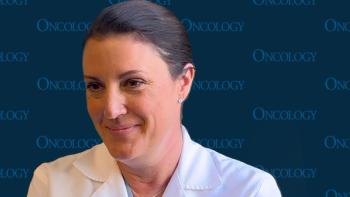
Oncology NEWS International
- Oncology NEWS International Vol 6 No 4
- Volume 6
- Issue 4
'To Be or Not to Be,' That's the Question for The National Action Plan on Breast Cancer
WASHINGTON--The steering committee of the National Action Plan on Breast Cancer (NAPBC) finds itself confronting its future--whether it should have one. Should the group set a time to end the innovative program, or should it continue?
WASHINGTON--The steering committee of the National Action Plan on BreastCancer (NAPBC) finds itself confronting its future--whether it should haveone. Should the group set a time to end the innovative program, or shouldit continue?
The issue, spawned by an earlier steering committee decision [see OncologyNews International, December 1996], arose again during a meeting with Healthand Human Services Secretary Donna E. Shalala, PhD.
Last November, the committee voted to return to the National CancerInstitute all but $750,000 of the $14.75 million allotted to the NAPBC(and to other cross-cutting breast cancer activities) by Congress for thecurrent fiscal year.
Most members believe the program should serve as a catalyst, identifyingareas of need in breast cancer research, care, and education, and thenworking with appropriate agencies and organizations to get these issuesgreater funding and attention. They do not want the NAPBC to fund researchdirectly.
Last November, the steering committee asked that the $14 million goto the National Cancer Institute for research. The committee, consistingof representatives from inside and outside the federal government, is uniquein the federal system. It believes it has the power to decide what theNAPBC will do, not just serve as an advisory board.
'A New Concept'
At their February meeting, committee members sought to clarify the powerissue with Secretary Shalala. And at one point, Susan M. Love, MD, adjunctassociate professor of surgery, UCLA, told the HHS Secretary: "Wereally never intended to go on forever and become another bureaucracy."Dr. Love suggested that the group should think about setting a time towind up its efforts and go out of business.
"That's a new concept for those of us who have been in government,"Secretary Shalala jokingly replied. The Secretary asked the committee togive her its thoughts by the end of the day about whether the NAPBC shouldcease. The committee chose, however, to give the matter to one of its internalworking groups for greater consideration.
Articles in this issue
over 28 years ago
Mucin Markers May Play Role in Finding Breast Cancer Recurrencesover 28 years ago
Myoepithelial Cells May Be Key to Suppression of DCIS Growthover 28 years ago
Some Breast Cancer Patients May Not Need Node Dissectionover 28 years ago
Irinotecan Easier to Give as Physicians Gain Experienceover 28 years ago
Guidelines Highlight Staging Technologies For Pancreatic Cancerover 28 years ago
Lumpectomy Alone Appears to Be Safe In DCIS Patientsover 28 years ago
Multimodality Treatment Appears Safe for Pregnant Womenover 28 years ago
McGivney Outlines 'Ambitious Agenda' For NCCN in 7 Areasover 28 years ago
Capecitabine Studied In Advanced Colon CancerNewsletter
Stay up to date on recent advances in the multidisciplinary approach to cancer.

















































































